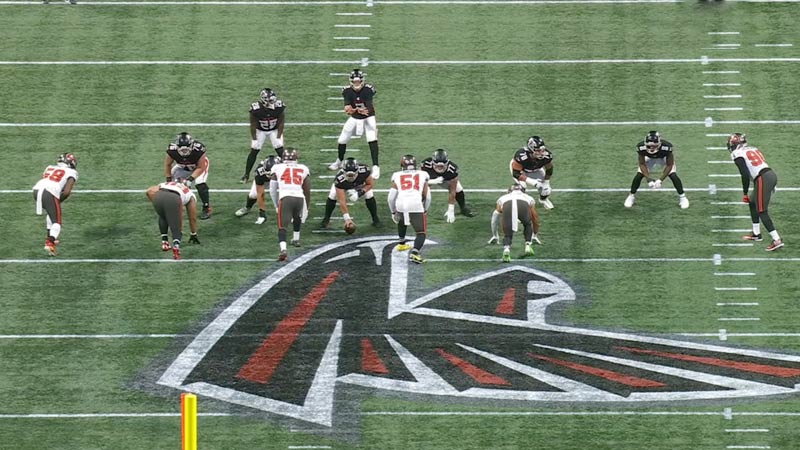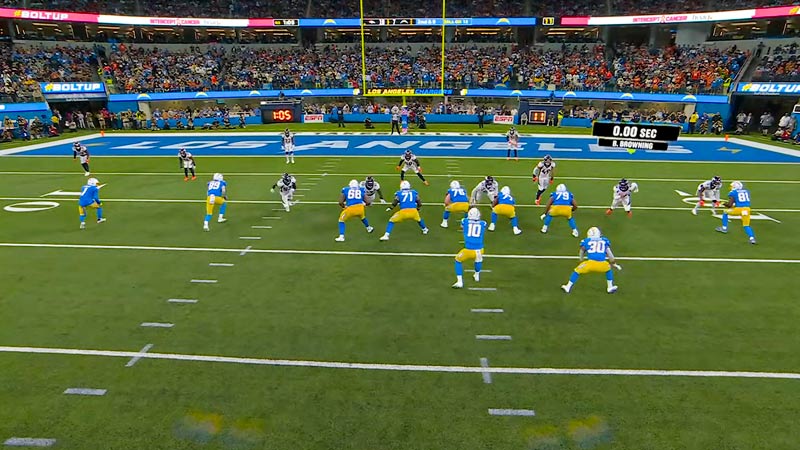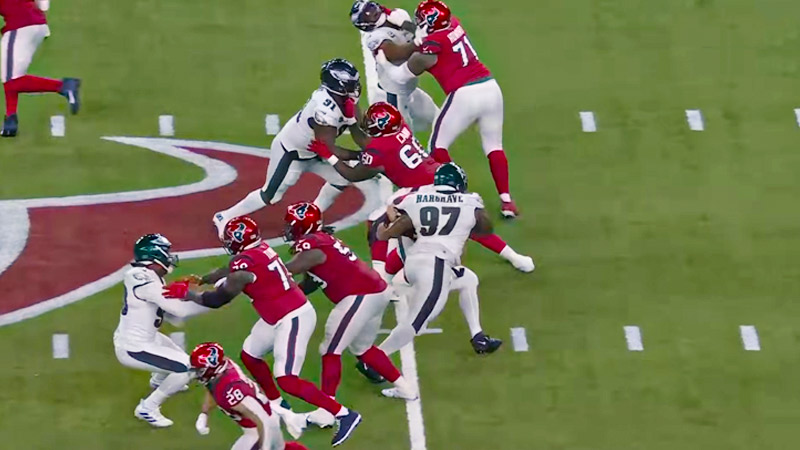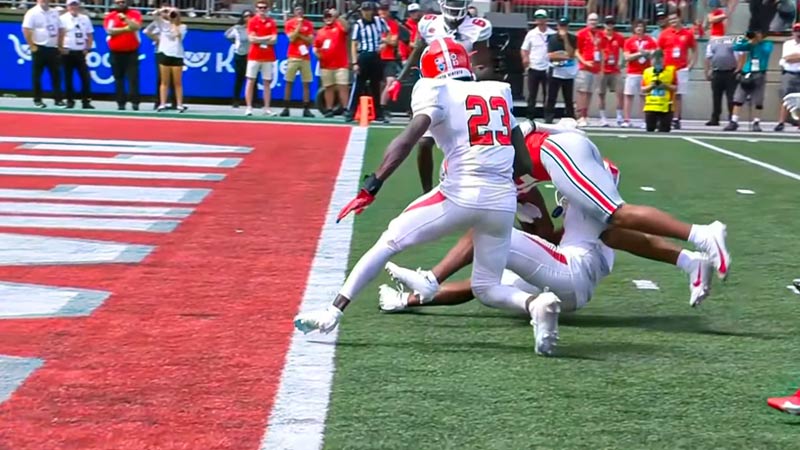Football, a sport that captivates millions around the world, is not only a game of intense competition and skill but also a meticulously regulated endeavor. The thrill of touchdowns, the precision of passes, and the exhilarating moments on the field are all governed by a complex set of rules and regulations.
Whether you’re a die-hard fan, a casual observer, or a newcomer to the game, having a solid grasp of these rules is essential to truly appreciate the strategy, teamwork, and drama that unfolds on the gridiron.
In this comprehensive guide, we will delve into five frequently asked questions about football rules and regulations, shedding light on the intricacies that shape the game we all love.
Rules of the Game
American football has rules on different sections and almost every aspect. Here are the set of rules regarding this popular sport.
Scrimmage and Downs
- Each offensive play starts at the line of scrimmage, where the ball is placed.
- The offense has four attempts, known as downs, to advance the ball at least 10 yards. If they achieve this, they receive a new set of downs to continue their drive. If not, possession of the ball is given to the opposing team.
First Down Marker
- The first down marker is a line located 10 yards from the line of scrimmage.
- The offense must advance the ball beyond the first down marker to earn a new set of downs.
Passing
- The quarterback is the player who throws the ball to teammates down the field.
- Receivers are eligible players who can catch the ball. At least seven players on the line of scrimmage must be ineligible to catch passes.
- A forward pass can only be thrown from behind the line of scrimmage.
- Only one forward pass is allowed per play.
Running
- Running backs and ball carriers attempt to carry the ball down the field by running.
- The offensive line blocks defenders to create running lanes for the ball carrier.
Tackling
- The defense aims to stop the offense by tackling the player with the ball.
- Tackling involves making contact with the ball carrier and bringing them to the ground.
- Tackling the quarterback behind the line of scrimmage is called a “sack.”
Scoring
- A touchdown is scored when a player crosses the opponent’s goal line with possession of the ball.
- After a touchdown, the offense can attempt an extra point by kicking the ball through the goalposts or a two-point conversion by running or passing the ball into the end zone.
- Field goals are scored by kicking the ball through the goalposts from anywhere on the field.
Incomplete Passes
- If a forward pass is dropped, goes out of bounds, or is otherwise incomplete, the play ends.
- Incomplete passes do not result in any yardage gain.
Fumbles
- If a player drops the ball while in possession, it is considered a fumble.
- The first player to recover the ball gains possession for their team.
Interceptions
- If a defensive player catches a forward pass intended for an offensive player, it’s called an interception.
- The defense gains possession of the ball at the spot of the interception.
Kickoffs and Punts
- Kickoffs start the game and follow scoring plays. The ball is kicked from one team’s 35-yard line to the other team.
- Punts are used on fourth down to kick the ball as far down the field as possible.
These rules outline the fundamental gameplay mechanics of American football. The sport’s complexity and strategy make each game a dynamic and exciting experience for both players and fans.
Rules and Regulations Regarding the Field Size

Here’s an elaboration on the rules and regulations regarding the field size in American football:
Field Dimensions
- The standard American football field is rectangular and measures 120 yards (360 feet) in length and 53.3 yards (160 feet) in width. This includes the playing field itself and the areas designated for out-of-bounds.
End Zones
- At each end of the field, there is an end zone that extends 10 yards deep from the goal line.
- The objective is to carry the ball into the opponent’s end zone to score a touchdown.
Yard Lines and Hash Marks
- Yard lines are marked across the field at intervals of 5 yards. The lines indicate the progression of the game.
- Hash marks are lines that are closer together and run parallel down the center of the field. They are used to determine the placement of the ball for each play.
Goalposts
- The goalposts are located at the back of each end zone.
- They consist of a horizontal crossbar and two vertical uprights. The crossbar is situated 10 feet above the ground, and the uprights extend above the crossbar.
Measurements
- Yard lines and hash marks are used for precise measurement of the ball’s position on the field.
- The distance from the line of scrimmage to the nearest end zone goal line is referred to as “distance to go” or simply “down and distance.”
Sidelines and Out-of-Bounds
- The sidelines run along the length of the field and mark the boundary of play.
- Any player stepping out of bounds during a play is considered out of bounds, and the play is stopped.
Hash Marks and Placement
- The hash marks are used to place the ball inbounds at the start of each play.
- The ball is typically placed at the hash mark nearest to where the previous play ended unless a penalty or other special circumstances dictate otherwise.
Coaches’ and Players’ Area
- The area along the sidelines designated for coaches, players, and team personnel is called the “team area.”
- Players and coaches are required to remain within the team area during the game.
Field Surface
- The playing surface can vary but is usually natural grass or synthetic turf.
These field size and dimension regulations ensure consistency across games and provide the framework within which American football is played. The dimensions of the field contribute to the strategy and dynamics of the sport, influencing aspects such as game tactics, field position, and scoring opportunities.
Football Rules on Game Duration and Formation

There are a lot of rules and regulations regarding game duration and formation in American football. Here is the overview of those rules.
Game Duration
- A standard American football game consists of four quarters, each lasting 15 minutes of actual play time.
- The clock stops for various reasons during a game, including incomplete passes, players going out of bounds, and timeouts. This can extend the overall duration of a game.
- Halftime occurs after the second quarter and typically lasts around 12 to 15 minutes.
Overtime
- If the score is tied at the end of the fourth quarter, the game goes into overtime.
- Each team is given an opportunity to possess the ball and attempt to score from a specified distance.
- If the first team scores a touchdown, the opposing team also gets a chance to score. If both teams score touchdowns or neither does, the game continues into additional overtime periods.
- The team with the most points at the end of an overtime period wins the game.
Formations
- Formations refer to the alignment of players on the field before the snap (start) of a play.
- The offensive formation includes the quarterback, offensive linemen, receivers, and running backs. Different formations can be used to create various offensive strategies.
- The defense lines up to counter the offense’s formation, adjusting their positions based on the situation.
Offensive Line Formation
- The offensive line consists of linemen who block for the quarterback and ball carriers.
- The center is responsible for snapping the ball to the quarterback.
- Guards and tackles form the rest of the offensive line.
Defensive Formation
- The defensive formation includes linemen, linebackers, and defensive backs.
- The defensive line aims to penetrate the offensive line and tackle ball carriers.
- Linebackers provide support against the run and pass.
- Defensive backs cover receivers and attempt to prevent passes from being completed.
Special Teams Formation
- Special teams handle kicking and returning plays, including kickoffs, punts, and field goal attempts.
- The return team sets up to receive the ball, while the kicking team tries to prevent returns or score on-field goals.
Shifts and Motion
- Before the snap, players on the offensive side can shift their positions or go in motion (movement before the snap).
- This can be used to confuse the defense or gain advantageous matchups.
Illegal Formation
- An illegal formation occurs when the offense does not have the required number of players on the line of scrimmage or if too many players are in the backfield.
- Such a formation results in a penalty.
Audibles and Signals
- The quarterback and other players use audibles and signals to change the play call at the line of scrimmage based on the defensive alignment.
- These adjustments allow the team to respond to the defense’s strategy.
Formations and strategy play a crucial role in the game of American football, contributing to the tactical complexity and variety of offensive and defensive plays used throughout the match.
Rules on Teams and Players in Football

In this context, there are a few significant rules and regulations regarding teams and players. They are as follows.
Team Composition
- Each American football team consists of offense, defense, and special teams units.
- The offense is responsible for moving the ball down the field and scoring points.
- The defense aims to stop the offense and prevent them from scoring.
- Special teams handle kicking and returning plays, such as kickoffs, punts, and field goals.
Player Positions
There are various player positions on both offense and defense, each with specific roles and responsibilities.
Offensive Positions
- Quarterback (QB): The leader of the offense, responsible for passing and decision-making.
- Running Backs (RB): Players who carry the ball and can also catch passes.
- Wide Receivers (WR): Players who catch passes from the quarterback.
- Tight Ends (TE): Players who can catch passes like wide receivers but also block like linemen.
- Offensive Linemen (OL): Linemen who block for the quarterback and running backs. Positions include center, guard, and tackle.
Defensive Positions
- Defensive Linemen (DL): Linemen who attempt to tackle ball carriers and disrupt the offensive line.
- Linebackers (LB): Players who defend against both the run and pass, positioned behind the defensive linemen.
- Defensive Backs (DB): Players who cover wide receivers and tight ends, aiming to prevent passes from being caught.
Team Size
- A standard American football team typically has around 53 players on its roster.
- Only 11 players from each team are allowed on the field at a time.
Substitutions
- Players can be substituted in and out of the game during stoppages in play, such as timeouts, change of possession, or specific dead ball situations.
- Substitutions allow teams to adjust to offensive and defensive strategies.
Jersey Numbers
- Players wear numbered jerseys to identify them and their positions.
- Certain jersey numbers are restricted based on the player’s position.
Captains
- Each team designates team captains who represent the team during the coin toss and interact with officials.
- Captains also provide leadership on and off the field.
Uniforms
- Players wear uniforms that distinguish their teams and provide protection.
- Uniforms include helmets, shoulder pads, jerseys, pants, and other protective gear.
Penalties and Disqualifications
- Players can receive penalties for various rule violations.
- Repeated or serious violations can lead to disqualifications, also known as ejections, from the game.
Sportsmanship and Conduct
- Players are expected to display good sportsmanship and fair conduct on the field.
- Unsportsmanlike behavior, such as taunting, can result in penalties and affect team performance.
Injury Substitutions
- If a player is injured and unable to continue, a substitute can temporarily replace them on the field.
- The injured player may return later if medically cleared.
These rules and regulations regarding teams and players in American football ensure fair competition, safety, and the strategic complexity that makes the sport so engaging.
American Football Rules on Foul and Penalties
American football has a wide range of rules, fouls, and penalties designed to maintain fair play and ensure player safety. Here are some of the key rules regarding fouls and penalties in American football:
Offside
When a defensive player crosses the line of scrimmage before the ball is snapped, it’s called an offside penalty. This results in a five-yard penalty against the defense.
False Start
If an offensive player moves before the ball is snapped, it’s a false start penalty. This also results in a five-yard penalty against the offense.
Holding
Offensive players are not allowed to hold onto or grab defensive players to impede their movement. Similarly, defensive players cannot hold offensive players trying to catch a pass. Holding results in a 10-yard penalty.
Pass Interference
This occurs when a defensive player interferes with a receiver’s ability to catch a pass. It can result in a spot foul, meaning the offense gets the ball at the spot of the penalty or a 15-yard penalty if it’s not a spot foul.
Unsportsmanlike Conduct
Actions such as taunting opponents, using abusive language, or engaging in behavior that’s deemed unsportsmanlike can result in a 15-yard penalty.
Personal Foul
These are aggressive or dangerous actions that can cause harm to players, such as late hits or helmet-to-helmet contact. Personal fouls result in a 15-yard penalty.
Roughing the Passer/Kicker
Hitting the quarterback or kicker after they’ve released the ball (for the passer) or kicked the ball (for the kicker) is penalized with a 15-yard penalty.
Illegal Block
Blocks from behind or low blocks on players not engaged in the play are illegal and result in a 10- or 15-yard penalty, depending on the severity.
Chop Block
This is an illegal block in which one offensive player engages a defender high while another offensive player engages low simultaneously. It’s a 15-yard penalty.
Face Mask
Grabbing an opponent’s face mask is a penalty, with a five- or 15-yard penalty depending on the severity.
Intentional Grounding
Quarterbacks can’t intentionally throw the ball away to avoid a sack unless there’s a receiver in the vicinity. If they do, it’s a 10-yard penalty.
Delay of Game
When the offense takes too much time to snap the ball after the play clock expires, it’s a delay of game penalty, resulting in a five-yard penalty.
Illegal Formation
If the offense lines up with an incorrect number of players on the line of scrimmage, it’s an illegal formation penalty, resulting in a five-yard penalty.
These are just some examples of the various fouls and penalties in American football. Penalties can vary in severity, and the enforcement often depends on the situation and the level of play (college, professional, etc.).
The yardage marked off for penalties can differ based on the nature of the infraction.
Essential Regulation of American Football
American football is regulated by a comprehensive set of rules and regulations that govern all aspects of the game, from gameplay and equipment to player conduct and penalties.
The rules are developed and maintained by organizations like the National Football League (NFL) and the NCAA (National Collegiate Athletic Association). Here’s an overview of how American football is regulated:
Game Structure
American football is typically played in four quarters, each lasting 15 minutes (in the NFL) or 12 minutes (in college football). The game clock stops for various reasons, such as incomplete passes, players going out of bounds, or penalties.
Each team has a certain number of timeouts per half, allowing them to stop the clock in strategic situations.
Field and Equipment
The playing field is 100 yards long with end zones at each end, each measuring 10 yards. The field is divided into 10-yard increments, and yard lines are used for measuring progress and downs.
Teams have specific areas for offense and defense, and there are designated zones for different types of plays (e.g., red zone for scoring opportunities). Players are required to wear specific equipment for safety, including helmets, shoulder pads, knee pads, and more.
Scoring
- Touchdown: Worth six points, scored when a player crosses the opponent’s goal line with possession of the ball.
- Extra Point: After a touchdown, the scoring team can attempt an extra point kick (worth one point) or a two-point conversion play (worth two points).
- Field Goal: Worth three points, scored by kicking the ball through the opponent’s goalposts.
- Safety: Worth two points, awarded to the defense when they tackle an offensive player in possession of the ball in their own end zone.
Downs and Possession
The offensive team has four downs (attempts) to advance the ball at least 10 yards. If they succeed, they earn a new set of downs.
If the offensive team fails to gain 10 yards in four downs, possession of the ball is turned over to the opposing team. Teams can choose to punt on fourth down to give up possession but gain field position.
Player Substitutions
Substitutions can be made between plays, allowing teams to switch players and adjust their strategy based on the situation. Specialized players, like kickers and punters, often come onto the field only for specific plays.
Penalty Enforcement
Penalties are enforced for rule violations, and the non-offending team usually has the option to decline a penalty if they prefer the result of the play.
Yardage penalties can result in the offending team moving closer to their end zone or giving the opposing team an advantage in field position.
Video Review (Instant Replay)
In many leagues, including the NFL, coaches can challenge certain referee decisions using instant replay technology. This allows for review and potential correction of calls on the field.
These regulations ensure a fair and structured environment for the game of American football, allowing players, coaches, and fans to enjoy the sport with a clear understanding of the rules and expectations.
FAQs
What are the different components of the football field, and how are they utilized in gameplay?
The football field is a carefully marked battleground, measuring 100 yards in length with end zones on either end. Yard lines divide the field into increments of 10 yards, aiding in measuring progress.
Teams strategically navigate these zones to advance the ball toward the opponent’s goal line, with key areas like the red zone becoming focal points for scoring opportunities.
How are points scored in football, and what’s the significance of extra-point attempts and two-point conversions?
Scoring in football involves touchdowns, worth six points, achieved when a player crosses the opponent’s goal line with the ball. After a touchdown, teams can attempt an extra point kick (worth one point) or a two-point conversion play (worth two points).
Field goals, worth three points, involve kicking the ball through the opponent’s goalposts, while safeties, worth two points, reward the defense for tackling an offensive player in their own end zone.
Can you explain the concept of downs and how they impact possession of the ball?
A central element of football strategy is the concept of downs. The offensive team has four downs to advance the ball at least 10 yards. If they succeed, they earn a new set of downs.
If not, possession is handed over to the opposing team. This tactical interplay between downs, yardage, and field position is what keeps the game dynamic and suspenseful.
What are penalties, and how do they affect the course of a game?
Penalties are violations of the established rules, and their enforcement can significantly influence the game’s outcome.
They can result in yardage penalties that push a team closer to their end zone or gift the opposing team field position. The non-offending team often has the choice to accept or decline a penalty based on the play’s result.
How does instant replay technology impact the officiating of football games?
Incorporating modern technology, football leagues like the NFL utilize instant replay to review and potentially correct referee decisions. Coaches can challenge certain calls using replay, ensuring greater accuracy in crucial moments and maintaining fairness on the field.
Wrapping Up
As the whistle blows and the players take their positions, the symphony of football rules and regulations orchestrates the drama that unfolds on the gridiron.
From the rush of touchdowns to the tension of penalties, every aspect of the game is governed by a meticulous framework that guarantees fair play, player safety, and an unparalleled spectator experience.
Whether you’re shouting from the stands or watching from the comfort of your home, a solid understanding of these rules enriches the spectacle and allows you to fully immerse yourself in the beauty of football.
Hopefully, you have got the points I have described here. Thank you for your time.







